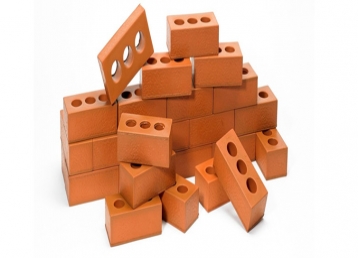The assembling system of Bricks :
There are Four Different activities associated with the course of blocks.
Preparation of Clay:
Moulding:
Drying
Burning
preparation of clay for Brick Manufacturing:
The readiness of mud for block fabricating is finished in six stages: Unsoiling of earth We want unadulterated mud for the planning of blocks. The top layer of soil might contain contaminations, so the mud in the top layer of soil around 200mm from top to bottom is discarded. This is called unsoiling. Digging After the expulsion of the top layer, the dirt is recovered starting from the earliest stage and spread on the plain ground. Cleaning In this stage, the dirt is cleaned of stones, vegetable matter and so forth if an enormous amount of particulate matter is available, the mud is washed and screened. The pieces of mud are changed over into powder with earth-pounding rollers.
1 . Molding of mud for block fabricating
In the trim cycle, arranged mud is formed into a block shape (by and large rectangular). This cycle should be possible in two ways as per the size of the task.
Hand shaping ( for limited scope)
Machine shaping ( for enormous scope)
Hand trim of blocks
If assembling of blocks is on a limited scale and labour supply is likewise modest then we can go for hand shaping. The moulds are rectangular made of wood or steel and are opened at the top and base. The more extended sides of moulds are extended out of the case to act as handles. Assuming that we think about strength steel moulds are superior to wooden moulds. Close by embellishment again there are two sorts and they are
Ground formed blocks
Table-shaped blocks
Ground shaped blocks this course of ground forming, first level the ground and sand or debris is sprinkled ready to be done.
Presently place the wet shape in the ground and filled it with tempered dirt and press hard to fill all sides of the form. Additional mud is eliminated with the metal strike or wood hit or with wire.
The shape is then lifted and we have a crude block in the ground. Furthermore, again wet the shape by dunking it in water and rehash a similar cycle. The method involved with plunging mould each chance to make blocks is called slop shaping.
Table-shaped blocks this interaction is like the ground forming process, yet here the blocks on shaped on a table of size 2m x 1m.
Ground shaping is efficient when contrasted with table embellishment.
2. Machine embellishment of blocks
The blocks required are in enormous amounts, then, at that point, machine shaping is prudent and saves additional time. Here likewise we are having two sorts of machines,
Plastic earth machines
Dry earth machines












